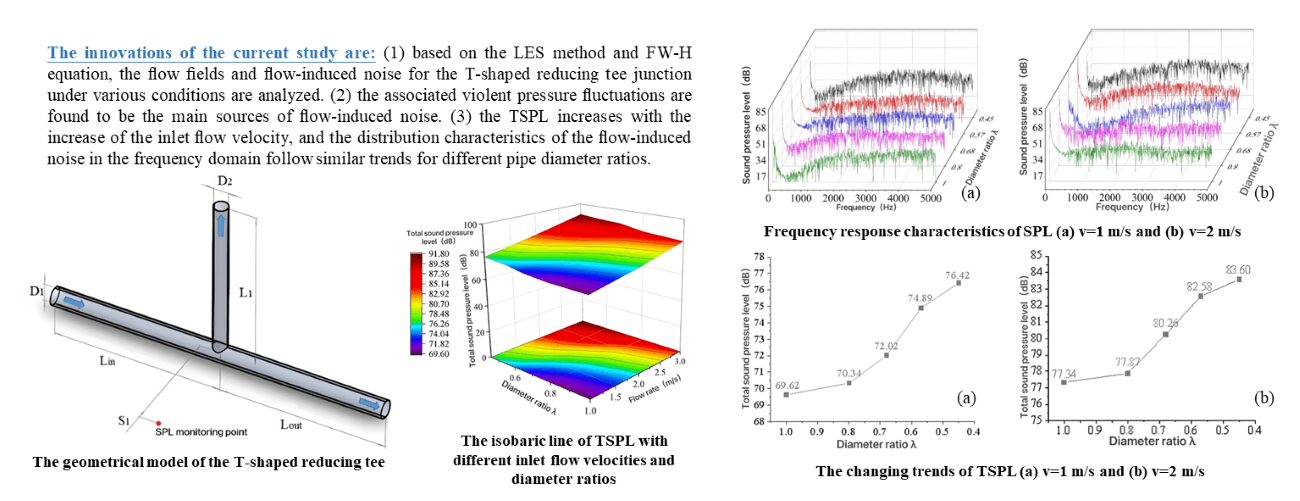 Open Access
Open Access
ARTICLE
Numerical Simulation of 3D Flow Field and Flow-Induced Noise Characteristics in a T-Shaped Reducing Tee Junction
1 Shandong Engineering Laboratory for High-Efficiency Energy Conservation and Energy Storage Technology & Equipment, School of Energy and Power Engineering, Shandong University, Jinan, 250061, China
2 Jinan Motor Vehicle Pollution Control Center, Jinan, 250099, China
3 School of Energy and Power Engineering, Qilu University of Technology, Jinan, 250306, China
* Corresponding Author: Ming Gao. Email:
Fluid Dynamics & Materials Processing 2023, 19(6), 1463-1478. https://doi.org/10.32604/fdmp.2023.024259
Received 28 May 2022; Accepted 09 August 2022; Issue published 30 January 2023
Abstract
The so-called T-shaped reducing tees are typically used to divide, change and control (to a certain extent) the flow direction in pipe networks. In this study, the Ffowcs Williams–Hawkings (FW-H) equation and the Large Eddy Simulation (LES) methods are used to simulate the flow-induced noise related to T-shaped reducing tees under different inlet flow velocities and for different pipe diameter ratios. The results show that the maximum flow velocity, average flow velocity, and vorticity in the branch pipe increase gradually as the related diameter decreases. Strong vorticity and secondary flows are also observed in the branch pipe, and the associated violent pressure fluctuations are found to be the main sources of flow-induced noise. In particular, as the pipe diameter ratio decreases from 1 to 0.45, the Total Sound Pressure Level (TSPL) increases by 6.8, 6.26, and 7.43 dB for values of the inlet flow velocity of 1, 2, and 3 m/s, respectively. The distribution characteristics of the flow-induced noise in the frequency domain follow similar trends for different pipe diameter ratios.Graphic Abstract

Keywords
Cite This Article
 Copyright © 2023 The Author(s). Published by Tech Science Press.
Copyright © 2023 The Author(s). Published by Tech Science Press.This work is licensed under a Creative Commons Attribution 4.0 International License , which permits unrestricted use, distribution, and reproduction in any medium, provided the original work is properly cited.


 Submit a Paper
Submit a Paper Propose a Special lssue
Propose a Special lssue View Full Text
View Full Text Download PDF
Download PDF Downloads
Downloads
 Citation Tools
Citation Tools